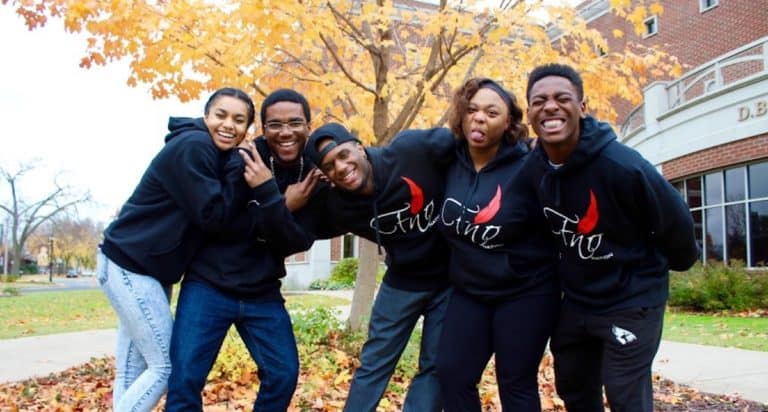I have taught in higher education for more than a decade, but I am not so removed from my own undergraduate experience that I can’t recall what a hot mess I was. No one would have looked at me as a college freshman, all of 17 years old, the product of an all-girls Catholic high school run by nuns, and thought, “Oh yes. That is a well-rounded adult human. She’s ready to conquer the world!”
I was naive about people’s good intentions, fearful about being around underage drinkers, and had a very slippery sense of time management. All of the SAT prep courses in the world could not have prepared me for the ravages of living in a freshman party trash dorm. I could only face it all head-on and know where to seek help in the event of a problem.

Students have access to powerful technology
The students I have taught in three different institutions (a community college, a private Christian university, and a small technical institute) are largely beginning their higher education at about the same age that I began mine. They, however, have a whole host of technological advances at their fingertips that I did not have including cellphones, wifi signals, Chromebooks, and GPS.
In spite of the vast world of information, they can readily access, the area in which I find they lack most, generally speaking, is in seeking the answers that Siri cannot provide.
In short, I wish my students had a stronger ability to confront the uncomfortable, acknowledge it, seek a solution, and move past it. Instead, I find that my Generation Z students see discomfort as a problem to be avoided. This avoidance of discomfort bears out in three chief ways that I am hopeful parents of rising college students might help to address.
Avoidance of discomfort manifests in three ways for my students
1. Conversation avoidance
Rare are the times when my students will speak to me face-to-face after class about their concerns, e.g. about having to do a public speech. They much prefer e-mailing me with the same casual tone used to text friends. I probably receive a daily e-mail from a student that begins, “Hey, I can’t find the reading for tonight.”
It’s clear that they are nervous about or have no experience reaching out to a professional and addressing them by their title. Although I may include a suggested template in my syllabus to guide them, this kind of communication takes practice. Addressing elders is an education that begins in the home, but leveling up our professional communication only happens if no one else is doing it for us.
2. Self-advocacy
I recognize that typically parents have been on the front lines of advocacy for students through high school. If my students had an Individualized Education Plan (IEP) prior to college, their parents would have been a part of the conversation.
Now, in a university setting these same students are often just realizing that they may need to seek out their own learning accommodations. As most colleges typically have an office of student support services that helps students with diagnoses of dyslexia, dyscalculia, ADHD, and other conditions, students must be proactive enough to seek out this help.
The onus is not on the professor to prescribe what each student needs, but I am confident that most sincerely want their students to gain as much benefit as possible from their class. The more information students can provide upfront to their professors about what they need and how they have accessed these technologies or modalities in the past, the better we can meet the students halfway.
3. Cellphones are a tool, not a companion
I will commonly walk into a classroom with all of the lights off, only to find several students are already seated, sitting in the dark, staring at their phones. Sometimes I will make a joke apologizing for waking the vampires. But the vampires do not want to be disturbed. They want to continue staring at their phones.
I say I’m sorry. I thought you all were here to get an education. I thought you were paying such a high premium to earn a degree! Such a shame — you could have saved so much money just by paying your cellphone bill instead of taking out all these loans.
We have a good laugh or a good stare, and then we are communicating until five minutes later when someone else feels the urge to take out their phone. This is puzzling, perhaps because I attended college in the paleozoic era pre cellphones. If I had seen someone walking across our checkerboard-sized campus with a cellphone, I would have thought them a fool, or a person with an overinflated sense of importance.
Some students are uncomfortable without constant feedback from their phones
I probably sound curmudgeonly when I recall how when I called my parents from college, it was on a calling card that cost me something per minute. Now my students text their parents and friends and strangers sliding into their Snapchat direct messages all the livelong day.
I sense that they are uncomfortable without the assurance of their phone pinging them back. They cease to be social creatures without that constant vibration of validation. And it makes me sad that this addiction is so normalized and unchecked.
I am only one curmudgeonly voice in the crowd, but I am hopeful that with more pushback from their parents and other mentors who remember a time pre-cellphone dependency, we will encourage our students to want to turn on the light to their future, beginning with the classrooms they enter.









